|
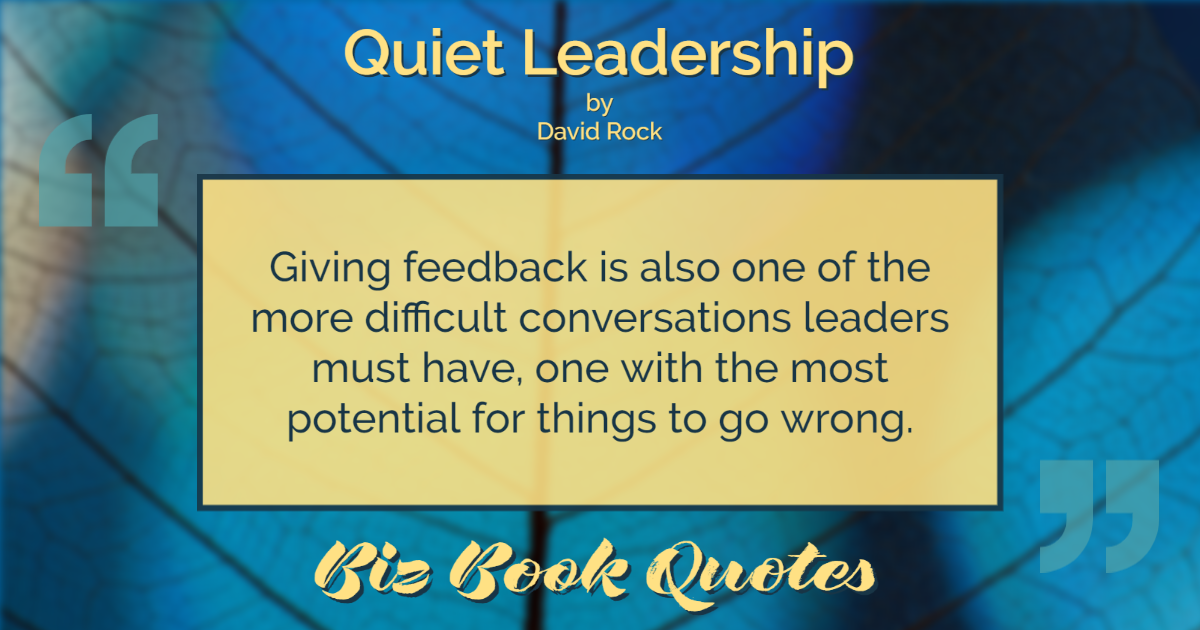
|
Quiet Leadership:
Giving feedback is also one of the more difficult conversations leaders must have, one with the most potential for things to go wrong.
|
203 |
|
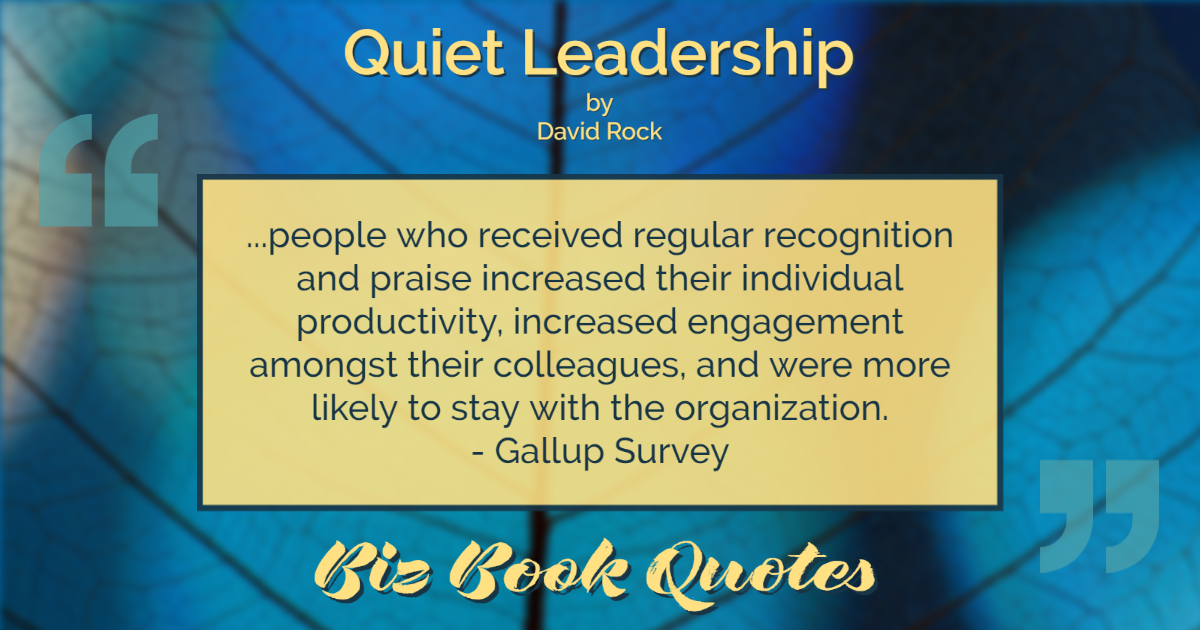
|
Quiet Leadership:
…people who received regular recognition and praise increased their individual productivity, increased engagement amongst their colleagues, and were more likely to stay with the organization. – Gallup Survey
|
204 |
|
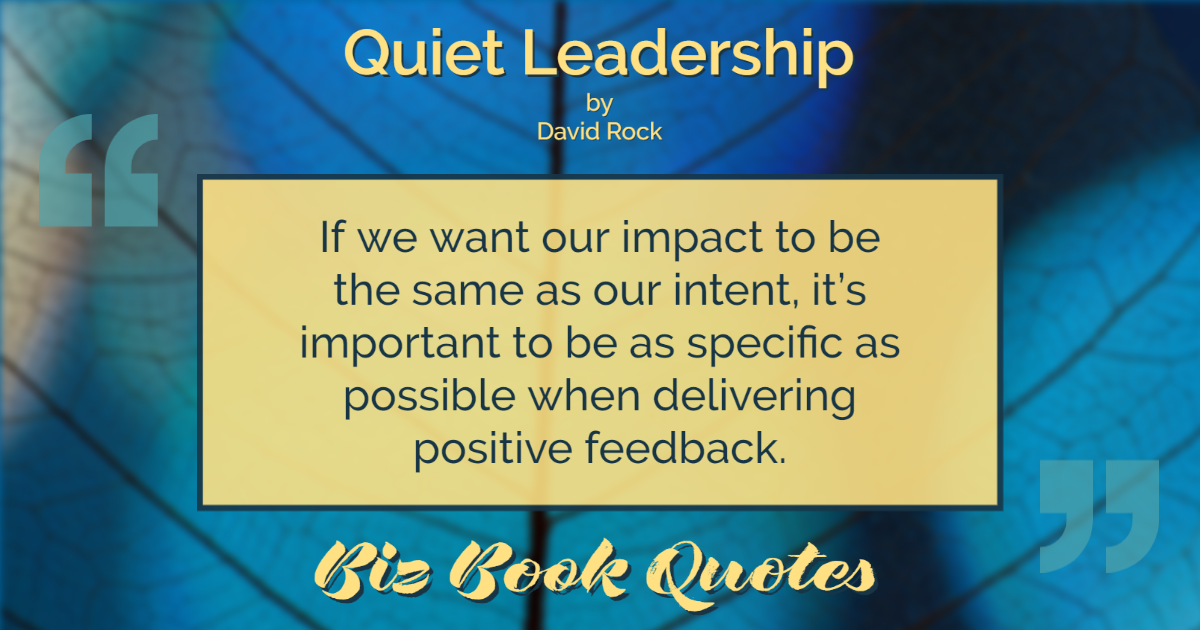
|
Quiet Leadership:
If we want our impact to be the same as our intent, it’s important to be as specific as possible when delivering positive feedback.
|
204 |
|
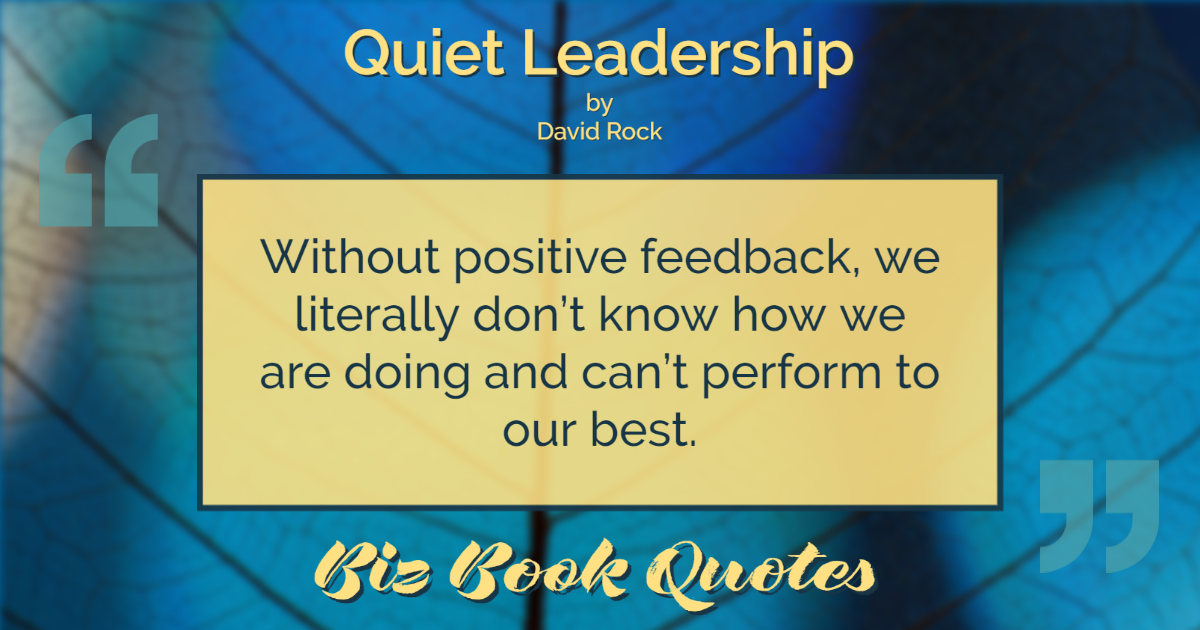
|
Quiet Leadership:
Without positive feedback, we literally don’t know how we are doing and can’t perform to our best.
|
204 |
|
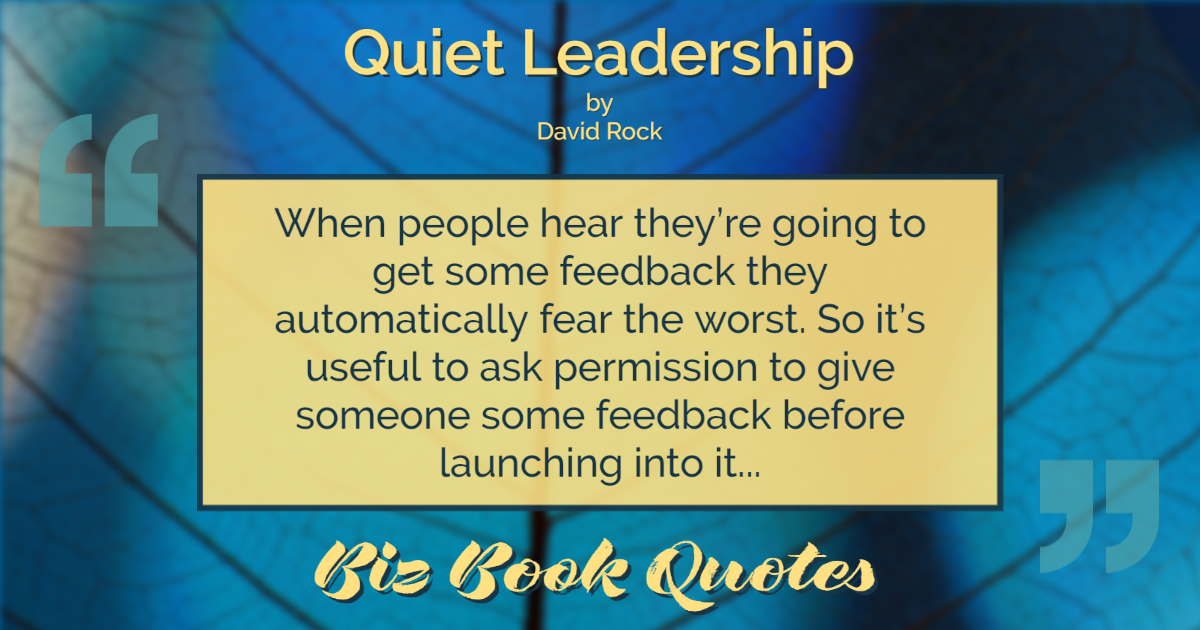
|
Quiet Leadership:
When people hear they’re going to get some feedback they automatically fear the worst. So it’s useful to ask permission to give someone some feedback before launching into it…
|
205 |
|

|
Quiet Leadership:
People thrive on positive feedback.
|
208 |
|
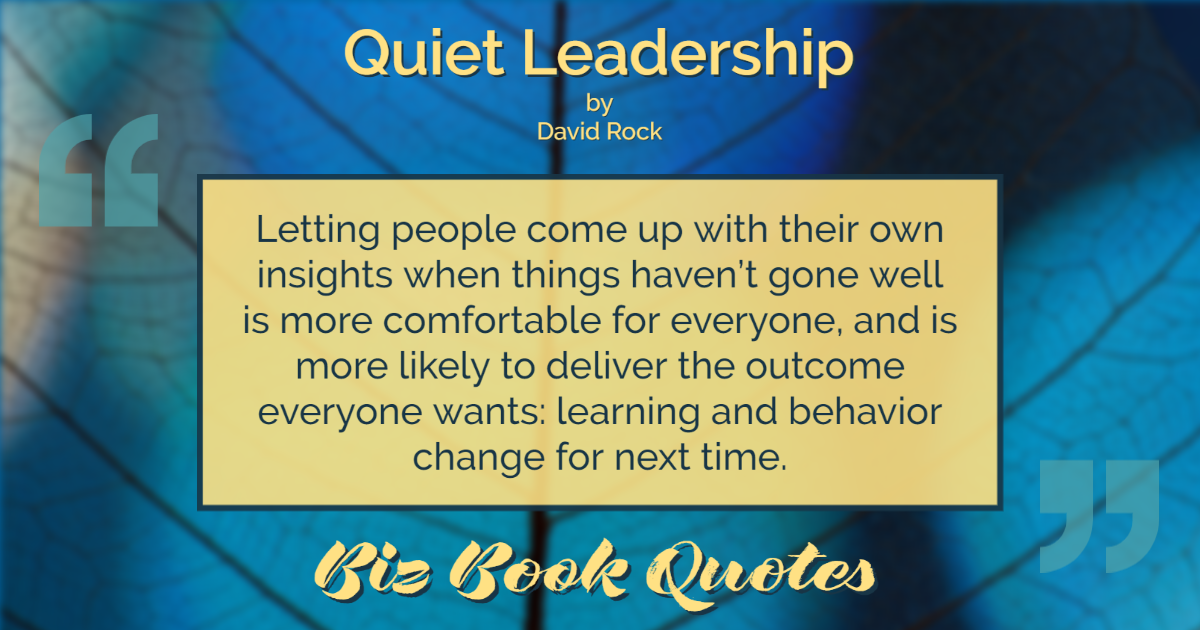
|
Quiet Leadership:
Letting people come up with their own insights when things haven’t gone well is more comfortable for everyone, and is more likely to deliver the outcome everyone wants: learning and behavior change for next time.
|
210 |
|
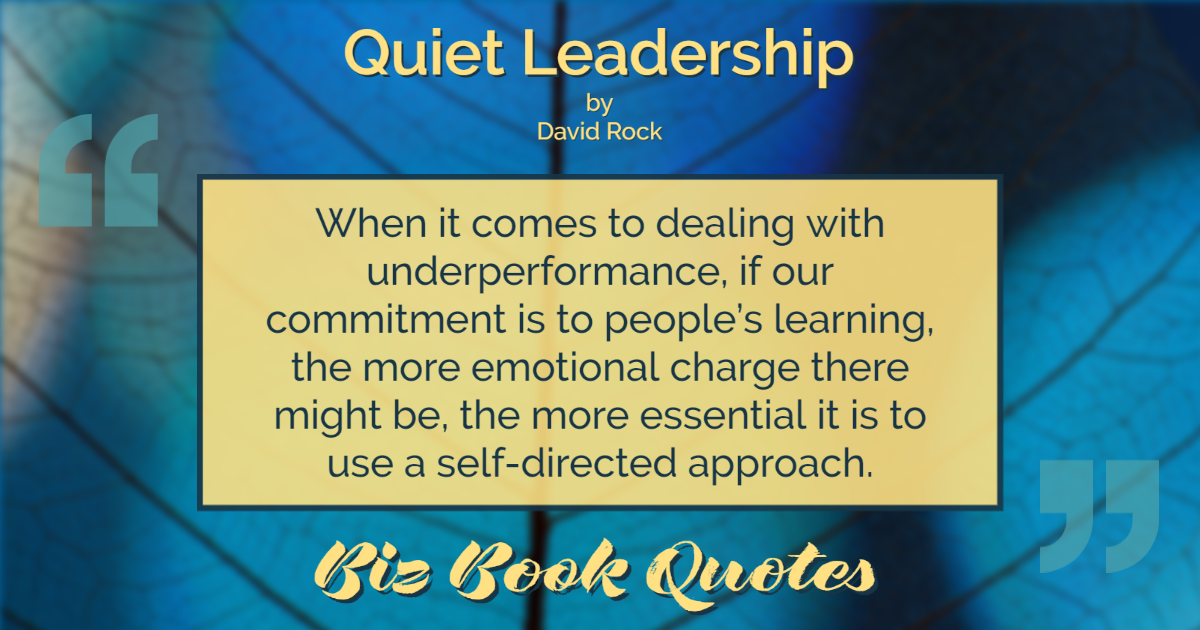
|
Quiet Leadership:
When it comes to dealing with underperformance, if our commitment is to people’s learning, the more emotional charge there might be, the more essential it is to use a self-directed approach.
|
214 |
|
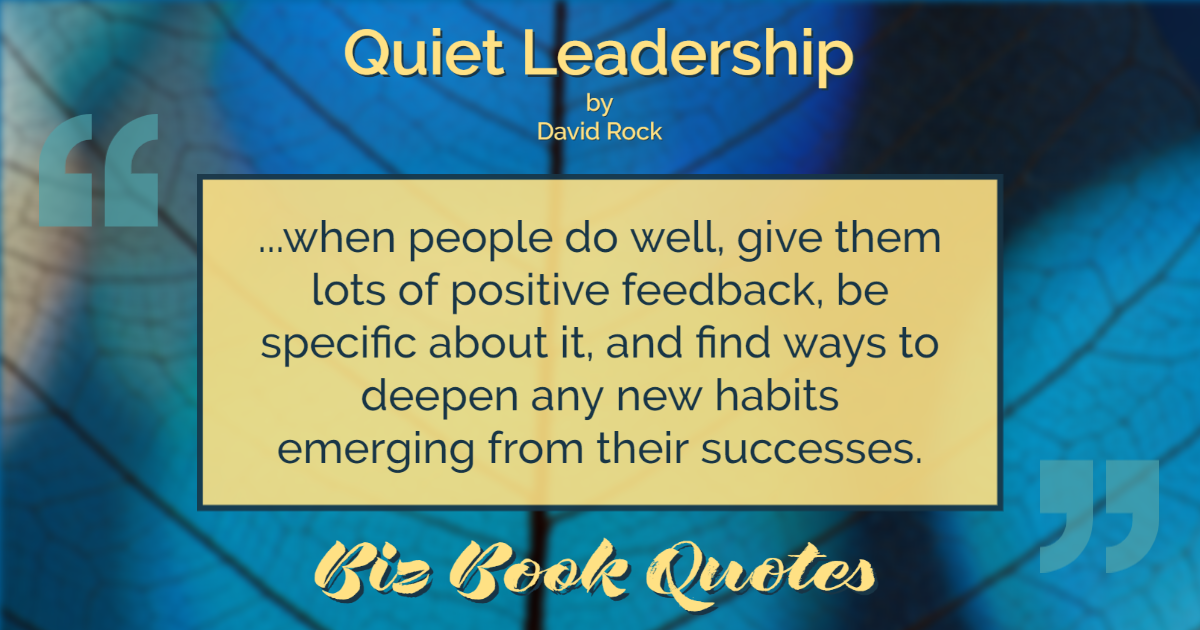
|
Quiet Leadership:
…when people do well, give them lots of positive feedback, be specific about it, and find ways to deepen any new habits emerging from their successes.
|
215 |
|
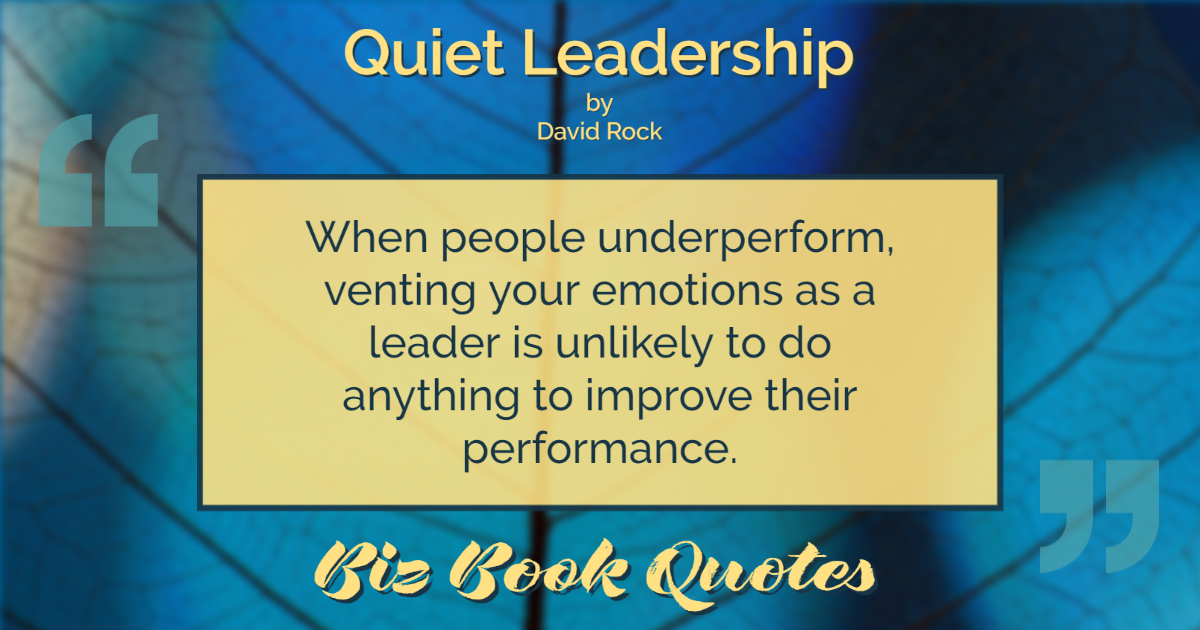
|
Quiet Leadership:
When people underperform, venting your emotions as a leader is unlikely to do anything to improve their performance.
|
215 |











